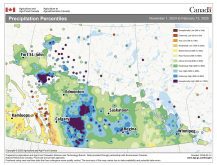The red meat trade between Canada and the European Union was tilted significantly in favour of Europe in 2021, based on Agriculture Canada data for the first 10 months of the year.
From January to October, European companies shipped $257 million worth of pork and beef to Canada. Most of that was pork, at $179 million, up 32 percent from the same period in 2020. The data does not include the United Kingdom, which is no longer part of the EU.
Germany leads the pack, exporting $68 million worth of pork to Canada. That’s a massive jump from 2020, when Germany sold $26 million to Canada from January to October.
Read Also

Pakistan reopens its doors to Canadian canola
Pakistan reopens its doors to Canadian canola after a three-year hiatus.
Italy is in the number two spot, exporting $36 million worth of pork to Canada.
The German sales to Canada could be related to African swine fever. The disease, which is deadly for pigs, was detected in Germany in 2020 and has since spread to three states. China has banned imports of German pork due to ASF concerns because the virus can be transmitted through infected meat. Without access to China, German pork exporters have been seeking other markets, including Canada.
While pork exports are up, EU beef sales to Canada slipped in 2021. Europe shipped $77.5 million worth of beef to Canada from January to October, down from $85 million in 2020.
In the first 10 months of 2021, Canadian beef exports to the EU climbed 33 percent. That sounds like a lot, but exports went from $13 million in 2020 to $17 million this year. In comparison, Canada exported $160 million in beef to Mexico from January to October.
As for pork, Canadian sales to the EU are barely worth mentioning.
Exports were $1.6 million from January to October.
If the flow of trade continues for November and December, Canada will likely record a $275 million deficit in red meat trade with the EU. The deficit has been expanding over the last four years since Canada and Europe implemented the Comprehensive Economic and Trade Agreement (CETA) in 2017.
The trade deal was supposed to accomplish the opposite.
Canadian livestock producers were promised huge gains in red meat exports, possibly $600 million in additional beef exports to the EU and $400 million more in pork. Those forecasts haven’t worked out, partly because the EU only accepts beef that is raised without growth hormones. However, Europe has also persisted with other barriers to red meat trade, such as rules around how animal carcasses should be washed in Canada.
Since about 2019, the Canadian Agri-Food Trade Alliance has urged the federal government to get tougher with the Europeans about CETA.
“Both sides need to demonstrate a willingness to resolve barriers to agri-food trade,” CAFTA said last April. “Without science at the centre of discussions, existing barriers appear to simply be back door protectionism, which runs completely counter to the spirit (of free trade).”
Much more work is needed, but Canada still has an opportunity to increase beef exports to Europe. In 2020, the EU imported $2 billion worth of beef from countries other than the U.K. Nearly 50 percent of the imports came from Brazil and Argentina.
Less than one percent of EU beef imports were from Canada.
















